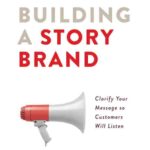Most people believe that the product or service is the key to business success. But I’d argue that this belief is one of the biggest myths in entrepreneurship. From where I stand, it’s not the product—it’s the marketing that determines whether a business wins or loses.
Let’s unpack that.
Take Starbucks, for example. Did they invent coffee? Absolutely not. Are they the only ones claiming to offer the “best” coffee? Not even close. So why are they a global brand while your favorite mom-and-pop café down the street barely stays afloat? The difference is marketing.
Marketing is the Real MVP
It’s tempting to romanticize product perfection—especially if you’re an engineer, artist, or technician at heart. The desire to tinker and polish until everything is just right is understandable. But business success isn’t about creating the best product in a vacuum. It’s about getting attention and converting that attention into loyal customers.
You can have a game-changing invention or revolutionary service, but if no one knows about it, it doesn’t matter. On the other hand, you can have an average product and thrive—so long as your marketing is on point. That’s not theory; it’s reality in today’s economy.
The Long Tail Shift
With the rise of the internet, marketplaces have become infinite. Chris Anderson coined the term “The Long Tail” in a Wired article to describe how niche products now thrive because digital platforms allow businesses to target micro-audiences. However, this only works when you know how to reach those micro-audiences. That’s marketing.
Related Post: The Long Tail Economy-What You Need to Know
A local business that offers superior craftsmanship or high-quality goods won’t automatically find success unless its messaging, branding, and customer outreach are aligned. Meanwhile, a savvy competitor with merely a decent product—but a killer content strategy or social media presence—might dominate the market.
Why Marketing First Isn’t Selling Out
Some entrepreneurs cringe at the idea of prioritizing marketing over the product. They think it’s dishonest or superficial. But here’s the truth: good marketing is not about manipulation; it’s about storytelling, positioning, and relevance.
You’re not tricking people—you’re helping the right people find your solution.
Related Post: Sales Is Not Sleazy: How to Embrace a Gift-Giving Posture
A fantastic product that solves a real problem but gets zero visibility doesn’t help anyone. Marketing is the bridge that connects value to the people who need it most.
Right Person, Right Time
Especially in today’s fragmented market, success depends on reaching the right person at the right time—not on being objectively “the best.” Your product might be more durable, more efficient, and more affordable than the competition—but if your ideal customers never hear about it or don’t understand how it fits their life, they’ll move on.
This is where precision marketing beats perfectionism. Understanding your target customer’s pain points, preferred channels, and emotional triggers matters far more than one extra feature or a slightly better price point.
The “Build It and They Will Come” Fallacy
One of the most dangerous entrepreneurial mantras is: “If I just build something great, people will find me.” That only works in movies.
In the real world, you need to build the path to your customer before you build the product. That means:
- Validating the idea with real customer feedback
- Creating a compelling value proposition
- Understanding where your ideal customers hang out online and offline
- Investing early in SEO and Generative Engine Optimization (GEO), content, and distribution—not just R&D
Don’t Confuse Virality With Strategy
Yes, there are stories of products going viral overnight. But most of those stories are outliers. Betting on virality is not a strategy; it’s a lottery ticket.
Smart entrepreneurs reverse-engineer their marketing early in the process. They ask: “Who is this for? Why would they care? Where can I reach them?” Then they bake the answers into everything they build—from product features to landing page headlines.
The Ideal Sequence
Here’s a more effective order of operations:
- Identify the audience.
- Understand their pain points and emotional drivers.
- Design a message and delivery method to attract them.
- Build a product that solves their problem.
- Market it with relentless consistency.
Don’t Forget About Word-of-Mouth—but Don’t Rely on It
Yes, word-of-mouth is powerful. But it only kicks in after people are aware of you. Marketing gets you in front of that initial audience. If your product delivers, they’ll tell others. But you need a launchpad—and that’s marketing.
So, the next time someone tells you all they need is a better product to win the market, remind them that even the best-kept secret in the world… is still a secret.
Do you value a quality product or a quality marketing strategy more—and how might your business change if you shifted your focus?












